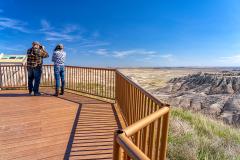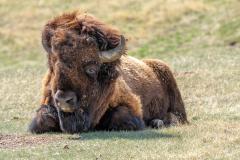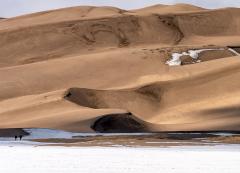Boxwork On The Ceiling Of Wind Cave At Wind Cave National Park
Boxwork is a type of speleothem (cave formation) made of thin blades of calcite that project from cave walls and ceilings, forming a honeycomb pattern. The fins intersect one another at various angles, forming "boxes" on all cave surfaces. Boxwork is largely confined to dolomite layers in the middle and lower levels of Wind Cave. As a matter of fact, ninety-five percent of the world's boxwork is found in Wind Cave.
- By Rebecca Latson - May 27th, 2024 3:00am















